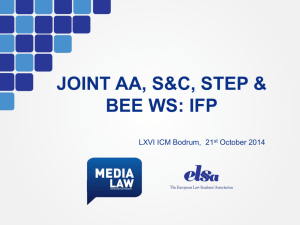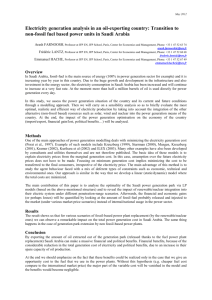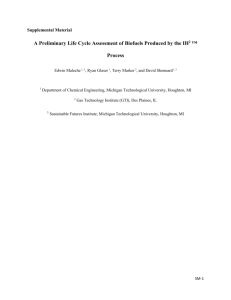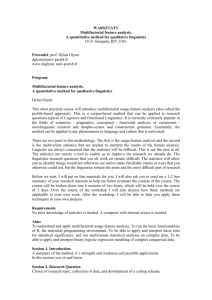IBM Intelligent Forms Processing
advertisement
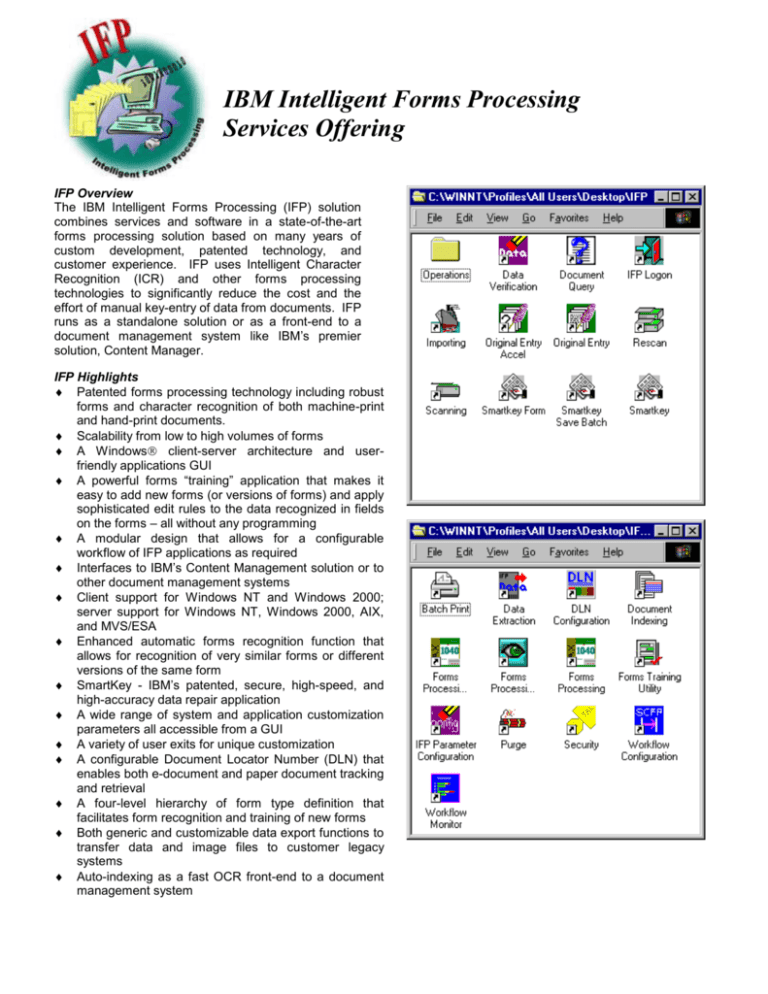
IBM Intelligent Forms Processing Services Offering IFP Overview The IBM Intelligent Forms Processing (IFP) solution combines services and software in a state-of-the-art forms processing solution based on many years of custom development, patented technology, and customer experience. IFP uses Intelligent Character Recognition (ICR) and other forms processing technologies to significantly reduce the cost and the effort of manual key-entry of data from documents. IFP runs as a standalone solution or as a front-end to a document management system like IBM’s premier solution, Content Manager. IFP Highlights Patented forms processing technology including robust forms and character recognition of both machine-print and hand-print documents. Scalability from low to high volumes of forms A Windows client-server architecture and userfriendly applications GUI A powerful forms “training” application that makes it easy to add new forms (or versions of forms) and apply sophisticated edit rules to the data recognized in fields on the forms – all without any programming A modular design that allows for a configurable workflow of IFP applications as required Interfaces to IBM’s Content Management solution or to other document management systems Client support for Windows NT and Windows 2000; server support for Windows NT, Windows 2000, AIX, and MVS/ESA Enhanced automatic forms recognition function that allows for recognition of very similar forms or different versions of the same form SmartKey - IBM’s patented, secure, high-speed, and high-accuracy data repair application A wide range of system and application customization parameters all accessible from a GUI A variety of user exits for unique customization A configurable Document Locator Number (DLN) that enables both e-document and paper document tracking and retrieval A four-level hierarchy of form type definition that facilitates form recognition and training of new forms Both generic and customizable data export functions to transfer data and image files to customer legacy systems Auto-indexing as a fast OCR front-end to a document management system IFP Benefits: IFP is designed for organizations that need to quickly and accurately capture data from large volumes of forms. This saves having to key-enter the data manually to feed legacy systems or index the document images in a document management system. Examples of the kinds of forms that IFP processes today include tax returns, Medicare forms, insurance forms, invoices, census forms, and remittance documents (checks and payment coupons). Four Basic IFP Applications Categories Data capture – includes “training” new forms to add to the system, scanning the forms, and performing forms processing. IFP’s scan application uses ISIS drivers to interface to many low-to-high speed OEM scanners. IFP can also import images (TIFF or MODCA) from other sources. The ability to train and recognize complex forms with multiple versions, do field edits, read 1D and 2D barcodes, and automate data validation using table/dictionary lookups and custom user exits is a major advantage of the IFP system over competitor’s solutions. IFP is designed to handle complex forms, data fields, and high volumes (ten to hundreds of thousands of forms per day). Data repair – after the data has been recognized by the ICR/OCR function of forms processing, an operator must still verify a small percentage of the data. IFP has patented applications that assist these operators in repairing this data while simultaneously viewing the image or to key-enter the data directly from the image (when a form is not yet trained). IFP also has an autoindex capability to quickly capture documents as images as a front-end to a document management system. Data/Image export – IFP produces both data and image files derived from the paper forms and hands them off in a format suitable for import by customer legacy systems (e.g. XML or ASCII). IFP also has built a direct interface to IBM’s Content Management system to automatically load images into CM folders, provide CM index information, initiate the documents into the CM workflow, and provide optical archive of the document images. After data has been processed by the customer’s legacy system, IFP includes an error correction application that can interface directly with a legacy system to pre-fetch and display images of documents to operators to audit data in the legacy system. System services – IFP includes a variety of useful administrator tools for monitoring the IFP system applications workflow, managing the IFP database, indexing and retrieving document images, printing the images, and system security. IFP System Environment The IFP applications run on workstations with Windows NT or Windows 2000. A typical IFP system also includes two servers. The IFP system software and all images of the forms are stored on a file server that varies in the amount of DASD required based on the volumes of images processed. IFP also uses a database DB2 server to store all “trained” forms definitions, control and monitor the IFP workflow, and store all data captured, verified, and exported by the IFP applications. This is another major advantage of IFP over competitive applications that use a slower and less reliable file interface between applications. All IFP applications interface to these two servers connected by a local or wide-area network. Administrative function in the IFP system is another advantage IFP has over competition. Such function includes manual and automated monitoring of system performance, tracking operator performance, problem analysis, redirection of system resources, and purging of old data and images from the system. IFP is highly scaleable. As document volumes grow, additional software, workstations and server capacity can be added to handle it. IBM Global Services (IGS) provides customization, implementation, and IFP software support services for IFP customers. For additional information contact your IBM marketing representative or visit the IFP web site at www.clearlake.ibm.com/gov/ifp IBM Corporation, 800 North Frederick Avenue Gaithersburg, MD 20879 IBM is the registered trademark of International Business Machines Corporation. Windows NT and 2000 are registered trademarks of Microsoft Corporation. IBM product and service names are trademarks or registered trademarks of IBM. Other company product or service names may be trademarks or service marks of other companies.
